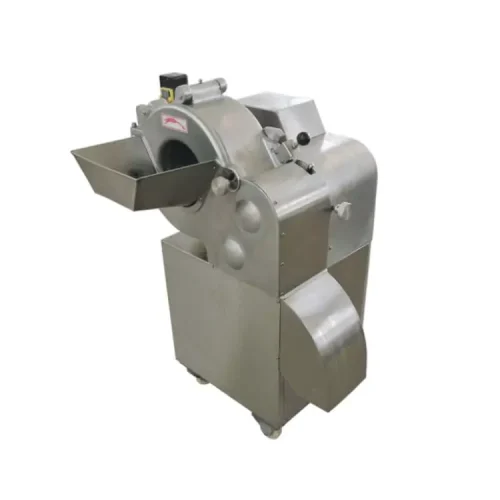What is Tomato Pulp Pasteurization?
Tomato pulp pasteurization is a process that involves heating tomato pulp to a specific temperature for a set period of time to eliminate harmful bacteria and other microorganisms. It is commonly used in the production of tomato-based products such as sauces, soups, and purees. By subjecting the pulp to controlled heat, the risk of foodborne illnesses associated with raw tomatoes is significantly reduced.
The pasteurization process involves heating the tomato pulp to a temperature between 85-95 degrees Celsius (185-203 degrees Fahrenheit) for a specific period of time. This heat treatment is sufficient to kill most harmful microorganisms while still preserving the natural flavor and color of the tomatoes. The exact temperature and duration of pasteurization may vary depending on the recipe and desired outcome.
Tomato pulp pasteurization can be done at home using basic kitchen equipment or on a larger scale in commercial food processing facilities. The technique has gained popularity among both home cooks and professional chefs due to its ability to enhance the safety and quality of tomato-based products.
Benefits of Tomato Pulp Pasteurization
The benefits of tomato pulp pasteurization extend far beyond food safety. Here are some of the key advantages of incorporating this technique into your kitchen:
- Enhanced Shelf Life: One of the primary benefits of pasteurizing tomato pulp is the increased shelf life of the final product. Pasteurization kills off spoilage-causing microorganisms, which means your homemade tomato sauces, soups, and purees can last longer without the need for preservatives or artificial additives.
- Improved Safety: Raw tomatoes can harbor harmful bacteria such as Salmonella and E. coli, which can cause foodborne illnesses. Pasteurization eliminates these pathogens, making your tomato-based products safer to consume.
- Flavor Enhancement: The heat from pasteurization breaks down enzymes in the tomato pulp, resulting in a more concentrated flavor. The natural sweetness and acidity of the tomatoes are heightened, creating a more vibrant and well-rounded taste.
- Consistency and Texture: Pasteurization helps to break down the cell walls of the tomatoes, resulting in a smoother and more velvety texture. This is especially desirable in sauces and soups where a silky consistency is desired.
- Versatility: Pasteurized tomato pulp can be used as a base for a wide range of dishes, including sauces, soups, stews, and even beverages. Its versatility allows you to experiment with different flavors and create culinary masterpieces with ease.
Step by Step Guide to Tomato Pulp Pasteurization
Now that you understand the benefits and methods of tomato pulp pasteurization, let’s dive into a step-by-step guide to help you get started:
- Prepare the tomatoes: Start by selecting ripe, high-quality tomatoes. Wash them thoroughly and remove any stems or blemishes. Cut the tomatoes into quarters or smaller pieces for easier processing.
- Extract the pulp: Use a food mill, blender, or food processor to extract the pulp from the tomatoes. Ensure that the pulp is free from seeds and skin for a smoother final product.
- Heat the tomato pulp: Transfer the tomato pulp to a large pot or saucepan. Heat the pulp over medium heat, stirring constantly, until it reaches the desired pasteurization temperature. Monitor the temperature using a food thermometer to ensure accuracy.
- Maintain the temperature: Once the pulp reaches the target temperature, maintain it for the recommended duration. This may vary depending on the recipe and desired level of pasteurization. Stir the pulp regularly to distribute the heat evenly.
- Cool and store the pulp: After the pasteurization process is complete, remove the pot from the heat and allow the tomato pulp to cool. Once cooled, transfer the pulp to sterilized jars or containers. Store the pasteurized tomato pulp in the refrigerator or freezer for future use.
Tips for Successful Tomato Pulp Pasteurization
To ensure successful tomato pulp pasteurization, consider the following tips:
- Use proper equipment: Invest in a reliable food thermometer to accurately measure the temperature of the tomato pulp during the pasteurization process. This will help you achieve the desired level of pasteurization and ensure food safety.
- Maintain cleanliness: Before starting the pasteurization process, make sure all equipment, jars, and utensils are clean and sterilized. Any contaminants can compromise the safety and quality of the final product.
- Follow recommended recipes: Start with trusted recipes that provide specific instructions for tomato pulp pasteurization. These recipes have been tested to ensure proper pasteurization and will help you achieve the best results.
- Store properly: Proper storage is essential to maintain the safety and quality of pasteurized tomato pulp. Follow recommended storage guidelines, such as refrigeration or freezing, to prolong the shelf life of your homemade tomato-based products.
FAQs
The Tomato Pulp Pasteurizer works by circulating hot water or steam around the tomato pulp, gradually heating it to the desired pasteurization temperature. The temperature is maintained for a set duration to ensure thorough pasteurization. After the process, the pulp is rapidly cooled to halt any further cooking.
- Ensures food safety: By effectively eliminating harmful microorganisms, the pasteurization process reduces the risk of foodborne illnesses.
- Extends shelf life: Pasteurizing tomato pulp helps to prolong its shelf life by preventing spoilage.
- Preserves flavor and nutrients: The gentle pasteurization process retains the natural flavor, color, and nutritional content of the tomato pulp.
Yes, Tomato Pulp Pasteurizers are available in various sizes to cater to different production capacities, including small-scale operations. Compact models are designed to meet the needs of small businesses or artisanal producers.
Regular maintenance is essential to ensure the efficient and safe operation of a Tomato Pulp Pasteurizer. This includes cleaning after each use to remove residues, inspecting components for wear and tear, and scheduling routine servicing according to the manufacturer's guidelines.



























